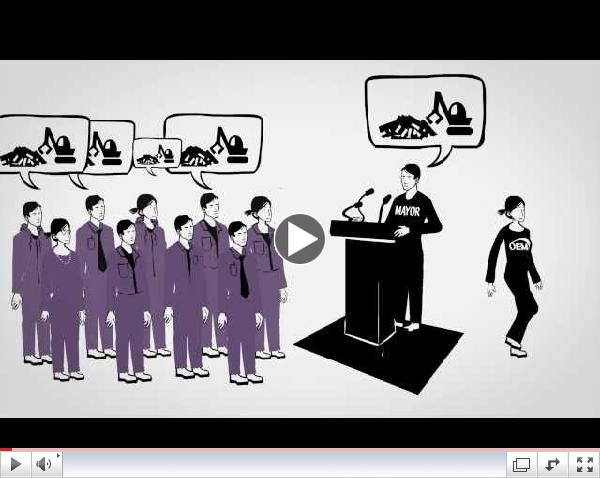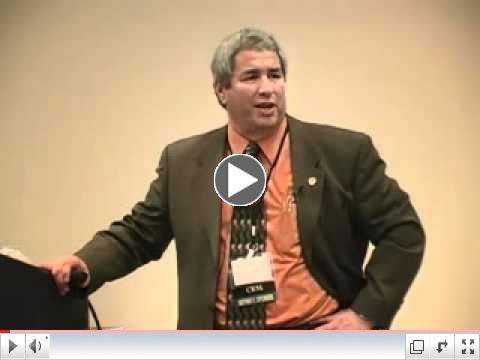 |
The Upside of Disasters
Rethinking the Loma Prieta Earthquake
| |
In his book, The Culture of Calamity: Disaster and the Making of America, author Kevin Rozario writes, "...disaster presents a chance to overcome some of the inertia that inhibits decisive action." If one considers the history of disaster in the United States, one finds a cycle of destruction/construction where the old and outdated is violently removed to make way for the new.
As emergency managers, we tend to focus on the micro effect of disasters: the toll in human suffering caused by death and injury and the social upheaval resulting from displaced populations. We see recovery as a logical progression in the disaster cycle and recognize a need to restore things "as they were | |
CLICK HERE TO READ THE REST OF THIS ARTICLE
_______________________________
If you are having trouble viewing my featured article, try clicking on the link at the top of the page. You can always find my articles in the white paper section of my blog site, Canton on Emergency Management.
|
|
What Do Emergency Managers Do?
 | | The Essential Emergency Manager |
This is an interesting public service announcement prepared by the Regional Catastrophic Planning Team that describes the role of the emergency manager in an easily-understood way. While it's a bit too response and terrorism focused, I think it's an excellent tool for communicating to the general public what we do in a time of crisis.
|
Blog Highlights
The following are excerpts from my blog
Canton on Emergency Management. Please visit my blog to see the rest of my articles.
|
 | | My Website |
Follow Me
 | |
Newsletter Archive
|
|
|
Greetings!
Welcome to the October issue of Emergency Management Solutions. For those of us in the San Francisco Bay Area, October always brings thoughts of the 1989 Loma Prieta earthquake. Thinking back over the past 24 years at the positive changes resulting from that disaster reminded me that there is another side to disaster besides the one with which we deal, one that produces profound change and not always bad change. That's the subject of this month's featured article.
Hope to see many of you at the annual conference of the International Association of Emergency Managers in Reno. I'll be signing books in the bookstore on Tuesday at 11:45 AM, so stop by and say hello. |
|
Regards,
 |
Professional Development
 The annual conference for the International Association of Emergency Managers starts in just a few days. The line-up of plenary speakers this year is truly impressive. I believe it's the first time that all of the plenary speakers are respected academics rather than professional speakers. The annual conference for the International Association of Emergency Managers starts in just a few days. The line-up of plenary speakers this year is truly impressive. I believe it's the first time that all of the plenary speakers are respected academics rather than professional speakers.
If you've spent any time with the research related to emergency management you'll have come across Dennis Mileti and Tom Drabek, two returning speakers from past conferences. Also returning is Brian Fagan whose work on historical climate change is both fascinating and more timely than ever. New to the conference is Eric Klineburg whose work on the 1995 Chicago heat wave is a classic study in social vulnerability and Rocco Casagrande, an expert in biological weapons of mass destruction. What a line up! Good as this is, the real value of the conference is the chance to network with your peers and to make new friends. We have a lot to learn from each other. It's not too late to sign up. Just click on the logo above. |
|
|
Recently I spent a few days at a training course in a hotel with a western theme. Each time I visited the men's room I passed a rack displaying a pair of leather chaps. The chaps were well used prior to being displayed and had obviously been on display for some time.
One of my hobbies is leather working and I found myself looking at the chaps and thinking how easy it would be to repair and restore them. They really only needed a few tears sewn up and a whole lot of oiling and polishing. I thought of offering my services to the establishment. I even had a vague notion that they should be "rescued".
Then I came to my senses. I was looking to take on someone else's problem when I already had more than enough to do with the course work I had been assigned and the projects already languishing on my work bench. I sadly passed on the idea of taking on the chaps as a project.
How often do we take on a project because we know we can solve it? Sometimes it has nothing to do with us; sometimes it's a task a subordinate could perform if we gave them a chance. The old adage of "pick your battles" is a good idea, so pass on those problems you really don't need to take on. You've already got more than enough to handle.
|
|
From the Bookshelf

The Culture of Calamity: Disaster and the Making of Modern America
by Kevin Rozario by University Of Chicago Press
As emergency managers, we are trained to think of disasters as something bad. This is because we see the impact of disaster on people and communities. However, if we view things from a macro level, the situation changes. Disasters are often the catalyst for positive change.
This is the premise of Kevin Rozario's book and he backs it up with some interesting observations on how Americans have typically dealt with disaster. Starting with the colonial era and the Puritan view of disasters as "acts of God", Rozario examines the historical context of disasters. He chronicles the growth of the Federal disaster bureaucracy over time and the influence of Hollywood imagery on our view of disaster.
Particularly interesting is Rozario's take on how the mania for security after September 11th tends to work against creative response and may actually be creating a new "culture of calamity".
|
|
Looking for a Speaker?
Need a speaker for your next conference? I offer keynotes, seminars and workshops. You can find more details on my website or on my SpeakerMatch page.
 | | Lucien Canton Seminar Excerpts |
|
|
|
|
|